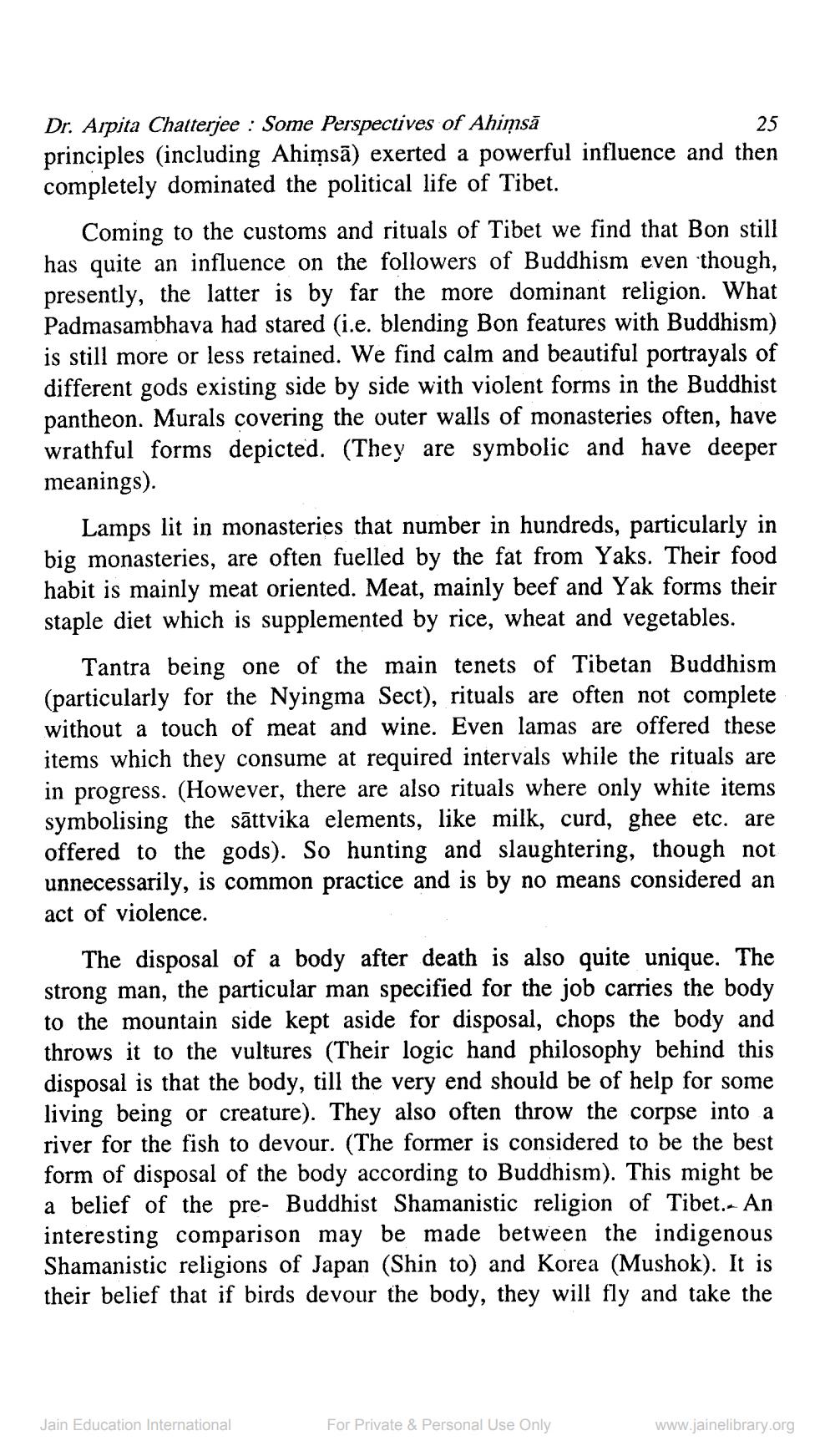________________
Dr. Arpita Chatterjee : Some Perspectives of Ahimsă
25 principles (including Ahimsā) exerted a powerful influence and then completely dominated the political life of Tibet.
Coming to the customs and rituals of Tibet we find that Bon still has quite an influence on the followers of Buddhism even though, presently, the latter is by far the more dominant religion. What Padmasambhava had stared (i.e. blending Bon features with Buddhism) is still more or less retained. We find calm and beautiful portrayals of different gods existing side by side with violent forms in the Buddhist pantheon. Murals covering the outer walls of monasteries often, have wrathful forms depicted. (They are symbolic and have deeper meanings).
Lamps lit in monasteries that number in hundreds, particularly in big monasteries, are often fuelled by the fat from Yaks. Their food habit is mainly meat oriented. Meat, mainly beef and Yak forms their staple diet which is supplemented by rice, wheat and vegetables.
Tantra being one of the main tenets of Tibetan Buddhism (particularly for the Nyingma Sect), rituals are often not complete without a touch of meat and wine. Even lamas are offered these items which they consume at required intervals while the rituals are in progress. (However, there are also rituals where only white items symbolising the sāttvika elements, like milk, curd, ghee etc. are offered to the gods). So hunting and slaughtering, though not unnecessarily, is common practice and is by no means considered an act of violence.
The disposal of a body after death is also quite unique. The strong man, the particular man specified for the job carries the body to the mountain side kept aside for disposal, chops the body and throws it to the vultures (Their logic hand philosophy behind this disposal is that the body, till the very end should be of help for some living being or creature). They also often throw the corpse into a river for the fish to devour. (The former is considered to be the best form of disposal of the body according to Buddhism). This might be a belief of the pre- Buddhist Shamanistic religion of Tibet.. An interesting comparison may be made between the indigenous Shamanistic religions of Japan (Shin to) and Korea (Mushok). It is their belief that if birds devour the body, they will fly and take the
Jain Education International
For Private & Personal Use Only
www.jainelibrary.org




